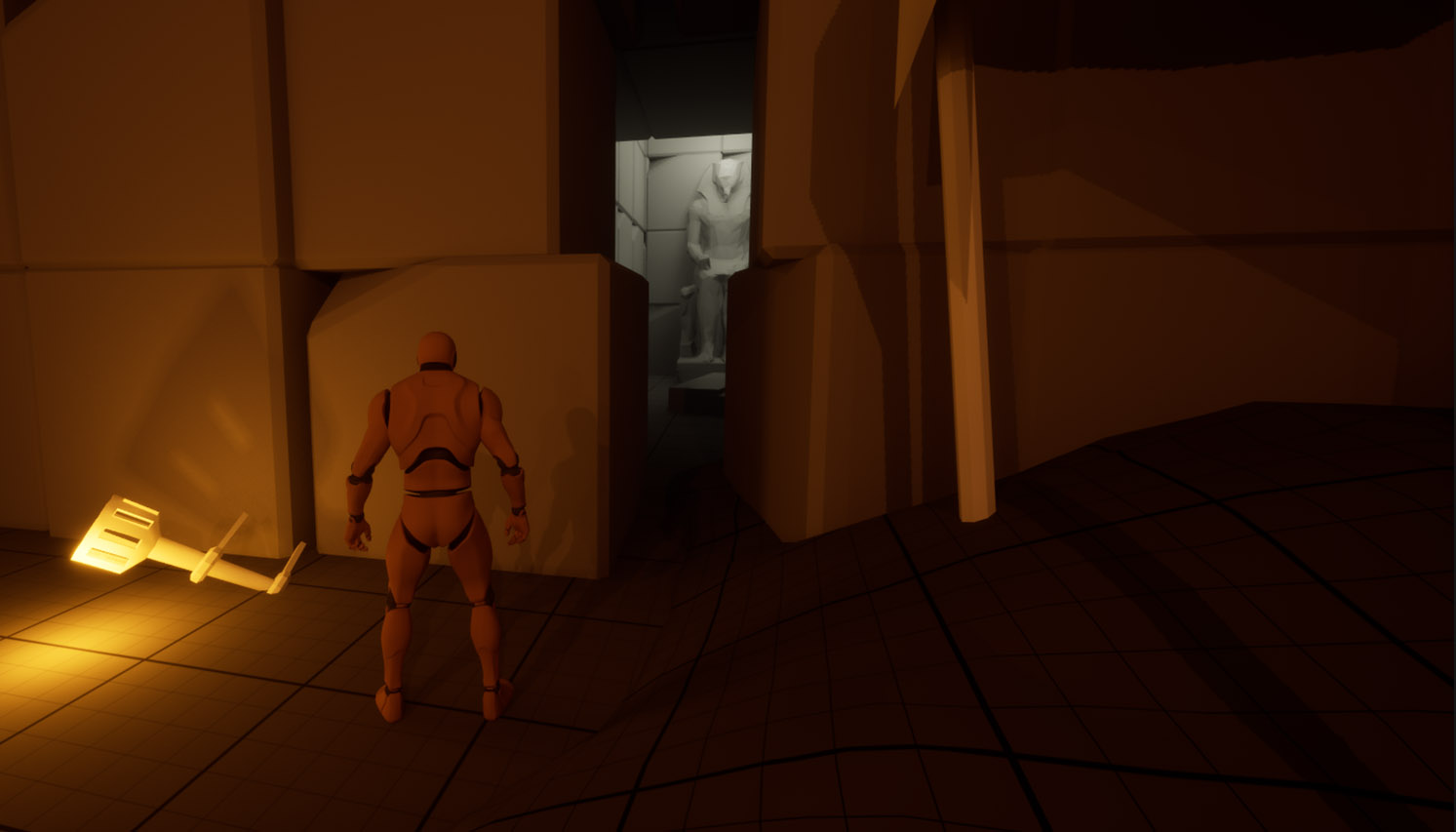Level Design for Games
CGMA
This is a collection of some of my work from the CGMA Level Design course (2024), led/mentored by Shane Canning (Lead Level Designer at Unseen Inc.) and Rob Colonico (Level Designer at Ubisoft Toronto).
The course covered game design theory, shape composition, architecture and player psychology, with a strong focus on designing and iterating level blockouts.
Using Unreal Engine 5.5, I worked through the entire level design process, from initial planning to playable prototypes to playtesting, crafting immersive environments that enhance gameplay and player experience.
Market Siege –
An urban combat zone
This level takes inspiration from The Division, distilled into a smaller urban encounter where a paramilitary syndicate has seized control of a market, using tight alleys, vertical sightlines, and dense cover to fortify their escape. The main focus was shaping combat spaces with sharp corners, elevation, and strategic peek points to create tactical opportunities.
When designing this level, I used overlapping paths to create a dense, layered playspace that encourages strategic positioning and spatial awareness. Players must carefully consider enemy locations and sightlines, making every engagement a tactical decision.
The city is designed with points of interest that naturally guide the player through alleys and pathways, ensuring smooth and intuitive navigation. To enhance the sense of scale, larger landmarks are placed outside the playable area, making the environment feel more expansive while maintaining a dense, focused gameplay space.
Floating Island –
Linear platforming
This level draws inspiration from Zelda: Tears of the Kingdom, set in a vibrant world where a primarily linear path guides the journey. Although there are a few deliberate deviations from the main path, the heavy use of landmarks and POIs consistently redirects players back to the central route. The exercise focused on framing POIs while maintaining clear, linear gameplay.
The castle serves as a striking landmark, always in view to guide players along a clear, linear path. Secondary routes are interwoven into the main path, offering hidden rewards for those who explore.
After the initial light platforming section, the level alternates between flying sequences and jump challenges to reinforce the core mechanics and ensure players quickly grasp the gameplay.
Sunken Tomb –
Semilinear exploration
This level takes inspiration from Uncharted, set in an ancient Egyptian tomb designed to emphasize exploration and discovery. The environment features winding corridors, hidden chambers, and vertical traversal, encouraging players to search for collectibles scattered throughout the map. The main focus was guiding the player using light, creating a natural flow through the tomb’s crumbling passageways while maintaining a sense of mystery.
In the main chamber, light serves as a subtle guide, directing the player toward hidden secrets and areas of interest. Additionally environmental props and the level layout are designed to naturally draw the player's attention, making key elements stand out.

The tomb is filled with hidden rooms tucked behind walls and collapsed passages, rewarding curious players who notice subtle environmental clues.
Jungle Ruins –
Lost ancient Temple
This level takes inspiration from Tomb Raider, set within a temple hidden deep in the jungle. The temple is designed with layered traversal, secret entrances, and hidden rooms with strong emphasis on platforming rewarding players who explore beyond the main path. The main focus was designing traversal challenges that encourage players to experiment with movement mechanics, using precise jumps, ledge grabs, and dynamic platforming to navigate the environment.
The player navigates a series of platforming challenges above water, carefully timing jumps to reach a hidden chamber. This open-ceiling room serves as a central hub, connecting multiple paths that branch deeper into the ruins.
A distant temple looms beyond the playable space, providing a sense of scale and deeper world-building. In contrast, the path forward forces the player to crouch through a tight passage, creating a claustrophobic shift in atmosphere.